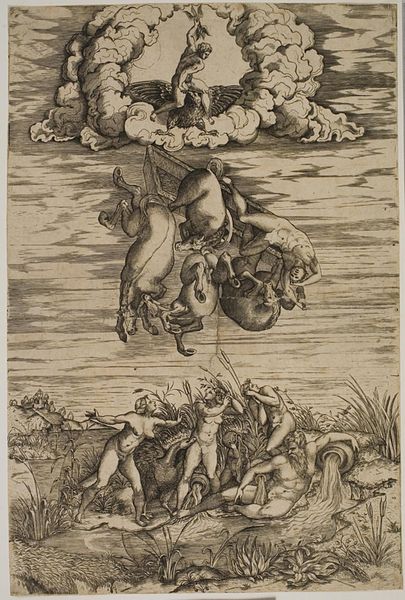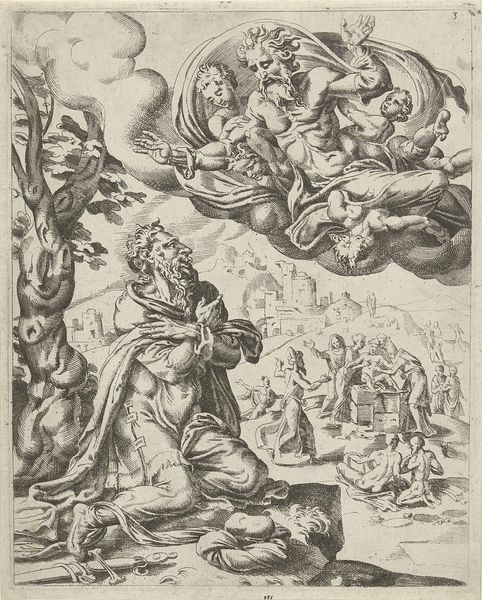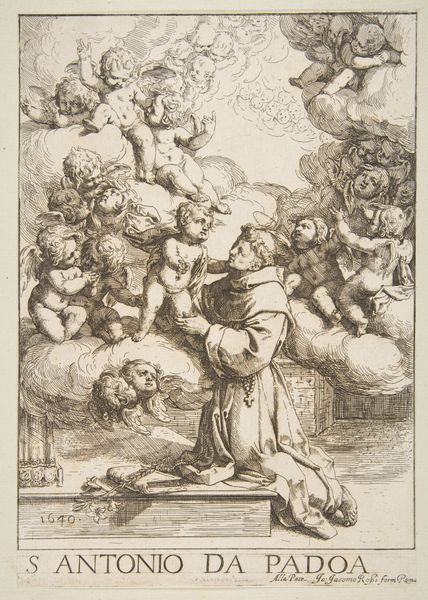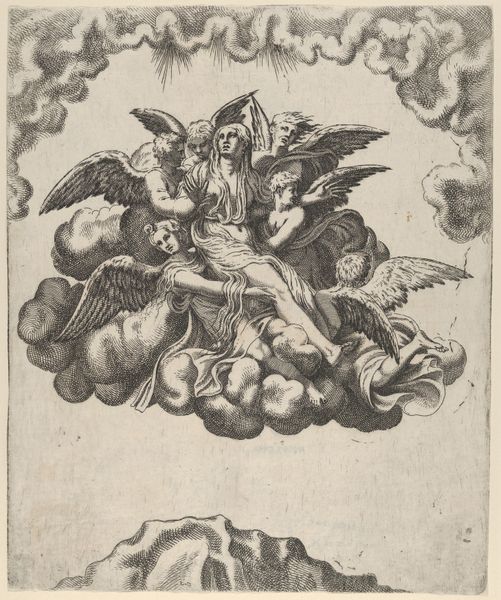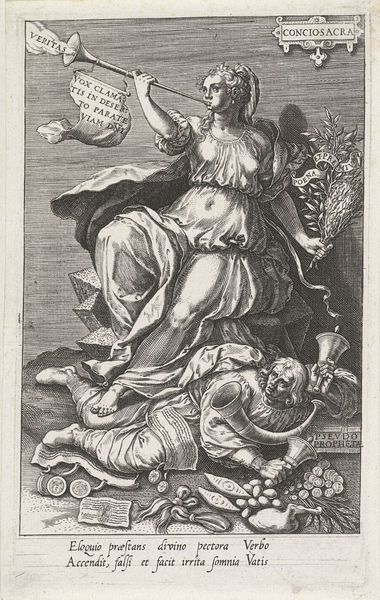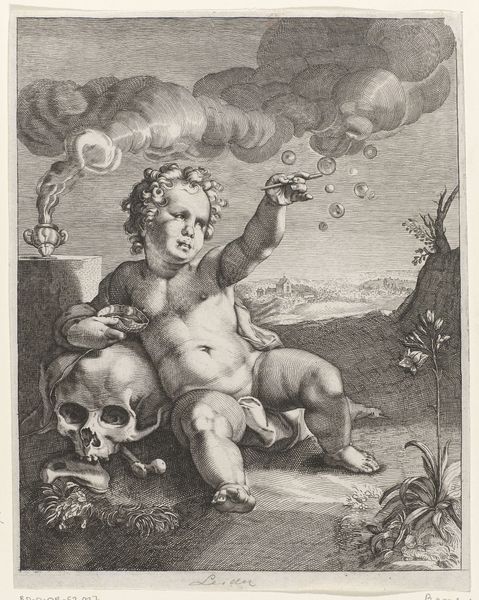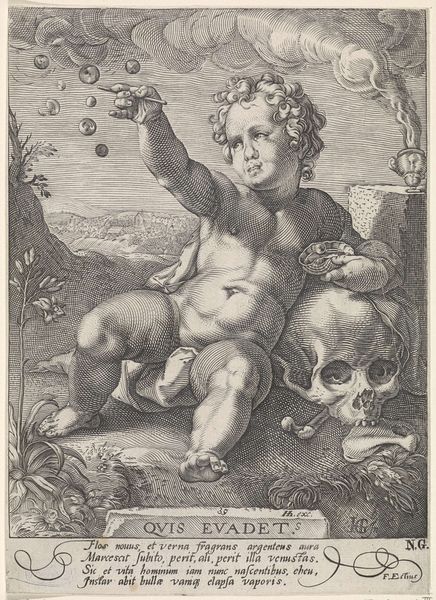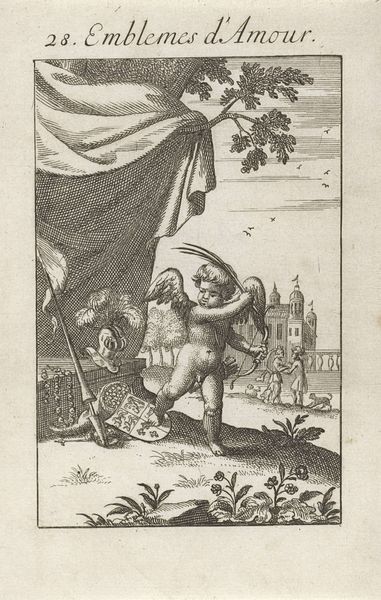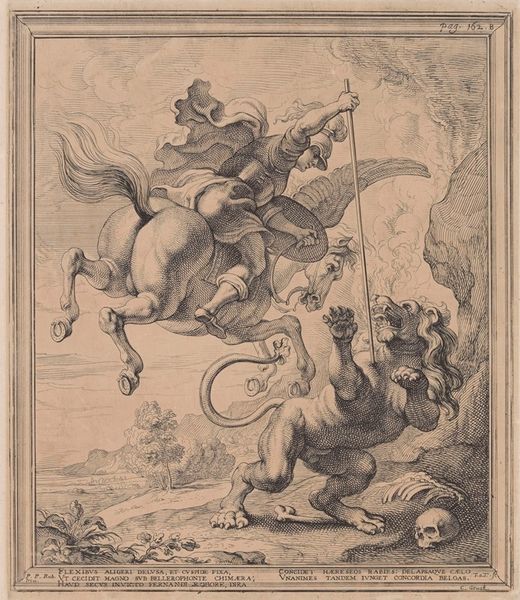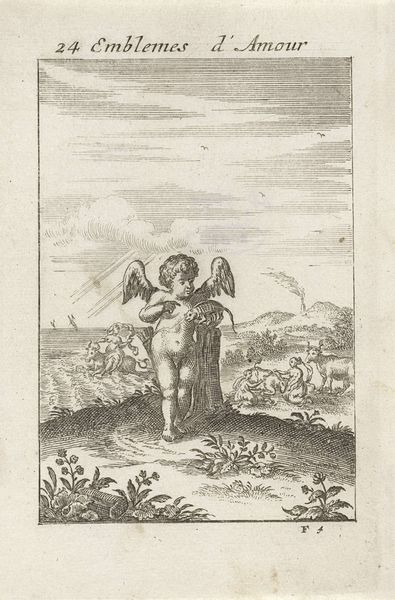
engraving
#
allegory
#
narrative-art
#
baroque
#
old engraving style
#
figuration
#
vanitas
#
line
#
history-painting
#
academic-art
#
engraving
Dimensions: height 213 mm, width 160 mm
Copyright: Rijks Museum: Open Domain
Curator: This is "Allegory of Transience," an engraving created sometime between 1694 and 1737, and presently residing here at the Rijksmuseum. Editor: My immediate reaction is a certain... tension. A chubby cherub, rather playfully blowing bubbles, but perched precariously atop a skull! The stark contrast in textures, the softness of the child versus the hard, bony surface, creates an odd dissonance. Curator: Precisely. This piece engages with vanitas themes, reflecting on mortality and the fleeting nature of life. The cherub blowing bubbles is a symbol of brevity, of life's fragility, further emphasized by its proximity to death. It makes us question ideas about the value we ascribe to life. Editor: And consider the composition! The linear quality of the engraving technique emphasizes form; the artist's expert use of line weight creates depth, and guides the eye through the complex symbolism—from the flowers at the base to the wisp of smoke rising in the upper right. It almost feels like a carefully constructed equation of visual elements. Curator: Yes, and viewing this work through a contemporary lens encourages us to interrogate historical attitudes towards childhood, religion, and the cultural constructs of death and innocence. The power structures embedded in the art of this era reveal a fascination and perhaps a fear of life's impermanence. Who benefits when society normalizes themes of mortality? Editor: Interesting. To my eye, there's a more universal exploration here of fleeting beauty versus stark, inevitable ending—not just historically. The artist employs semiotics expertly, where each element embodies a concept that encourages the viewer to decode the artwork itself, its texture and form almost transcending historical interpretation. Curator: Indeed, "Allegory of Transience" offers a multi-layered exploration of existence that resonates even now. By bringing different perspectives to the analysis of historical works we find deeper insight on what such art can offer contemporary views. Editor: Quite right. It demonstrates how careful attention to line, form, and symbol reveals profound questions about ourselves and our world.
Comments
No comments
Be the first to comment and join the conversation on the ultimate creative platform.



